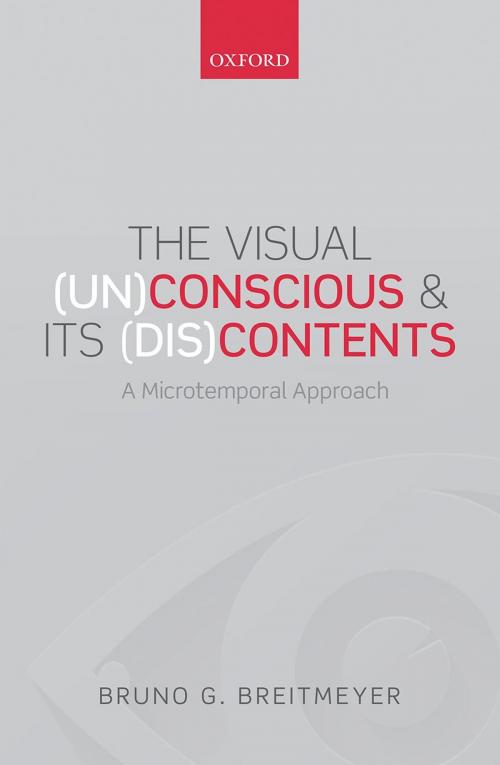The Visual (Un)Conscious and Its (Dis)Contents
A microtemporal approach
Nonfiction, Health & Well Being, Psychology, Cognitive Psychology, Science & Nature, Science| Author: | Bruno G. Breitmeyer | ISBN: | 9780191020797 |
| Publisher: | OUP Oxford | Publication: | June 12, 2014 |
| Imprint: | OUP Oxford | Language: | English |
| Author: | Bruno G. Breitmeyer |
| ISBN: | 9780191020797 |
| Publisher: | OUP Oxford |
| Publication: | June 12, 2014 |
| Imprint: | OUP Oxford |
| Language: | English |
Visual control of our actions can be unconscious as well as conscious. For example, when a pedestrian steps onto a street and then suddenly steps back, to avoid being hit by an oncoming car, the pedestrian's visual system has been able to detect the car very rapidly. Since the registration of the approaching car in conscious vision could take a few hundreds of milliseconds - possibly too long to avoid being struck by it, the rapid injury-avoiding action has relied on the oncoming car being detected at unconscious levels in the visual system. So how, and at what level in the visual system is a stimulus processed unconsciously? This book explores unconscious and conscious vision, investigated using psychophysical and brain-recording methods. These methods allow microtemporal analyses of visual processing during the interval, ranging from a few 10s to a few 100s of milliseconds, between a stimulus's impinging on the retinae and its eliciting a behavioral response or a conscious percept. By tying these findings to well-known neuroanatomical and physiological substrates of vision, the book presents and discusses theoretical and empirical approaches to, and findings on, conscious and unconscious vision. In addition to presenting an in-depth, integrative review of recent and ongoing scientific and scholarly research, the book proposes several avenues for directing future research in these areas. It also provides a well articulated theoretical and a detailed empirical base that points to the special importance of the processing of surface properties of visual objects to their conscious vision. Aimed at scientists and scholars in visual cognition, visual neuroscience and, more broadly, cognitive science - including that part of the philosophical community that is currently occupied with the mind-brain problem, the book sheds new light on and advances experimental, philosophical, and scholarly research on visual consciousness.
Visual control of our actions can be unconscious as well as conscious. For example, when a pedestrian steps onto a street and then suddenly steps back, to avoid being hit by an oncoming car, the pedestrian's visual system has been able to detect the car very rapidly. Since the registration of the approaching car in conscious vision could take a few hundreds of milliseconds - possibly too long to avoid being struck by it, the rapid injury-avoiding action has relied on the oncoming car being detected at unconscious levels in the visual system. So how, and at what level in the visual system is a stimulus processed unconsciously? This book explores unconscious and conscious vision, investigated using psychophysical and brain-recording methods. These methods allow microtemporal analyses of visual processing during the interval, ranging from a few 10s to a few 100s of milliseconds, between a stimulus's impinging on the retinae and its eliciting a behavioral response or a conscious percept. By tying these findings to well-known neuroanatomical and physiological substrates of vision, the book presents and discusses theoretical and empirical approaches to, and findings on, conscious and unconscious vision. In addition to presenting an in-depth, integrative review of recent and ongoing scientific and scholarly research, the book proposes several avenues for directing future research in these areas. It also provides a well articulated theoretical and a detailed empirical base that points to the special importance of the processing of surface properties of visual objects to their conscious vision. Aimed at scientists and scholars in visual cognition, visual neuroscience and, more broadly, cognitive science - including that part of the philosophical community that is currently occupied with the mind-brain problem, the book sheds new light on and advances experimental, philosophical, and scholarly research on visual consciousness.















